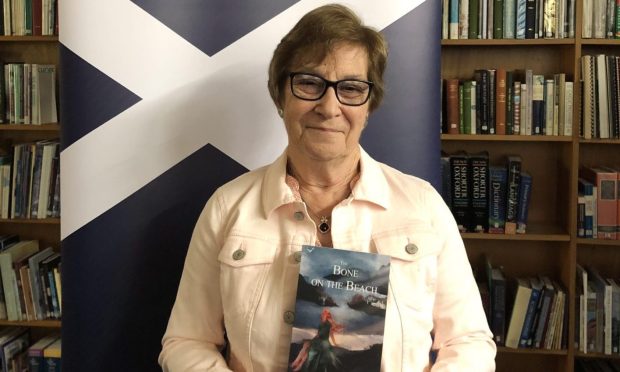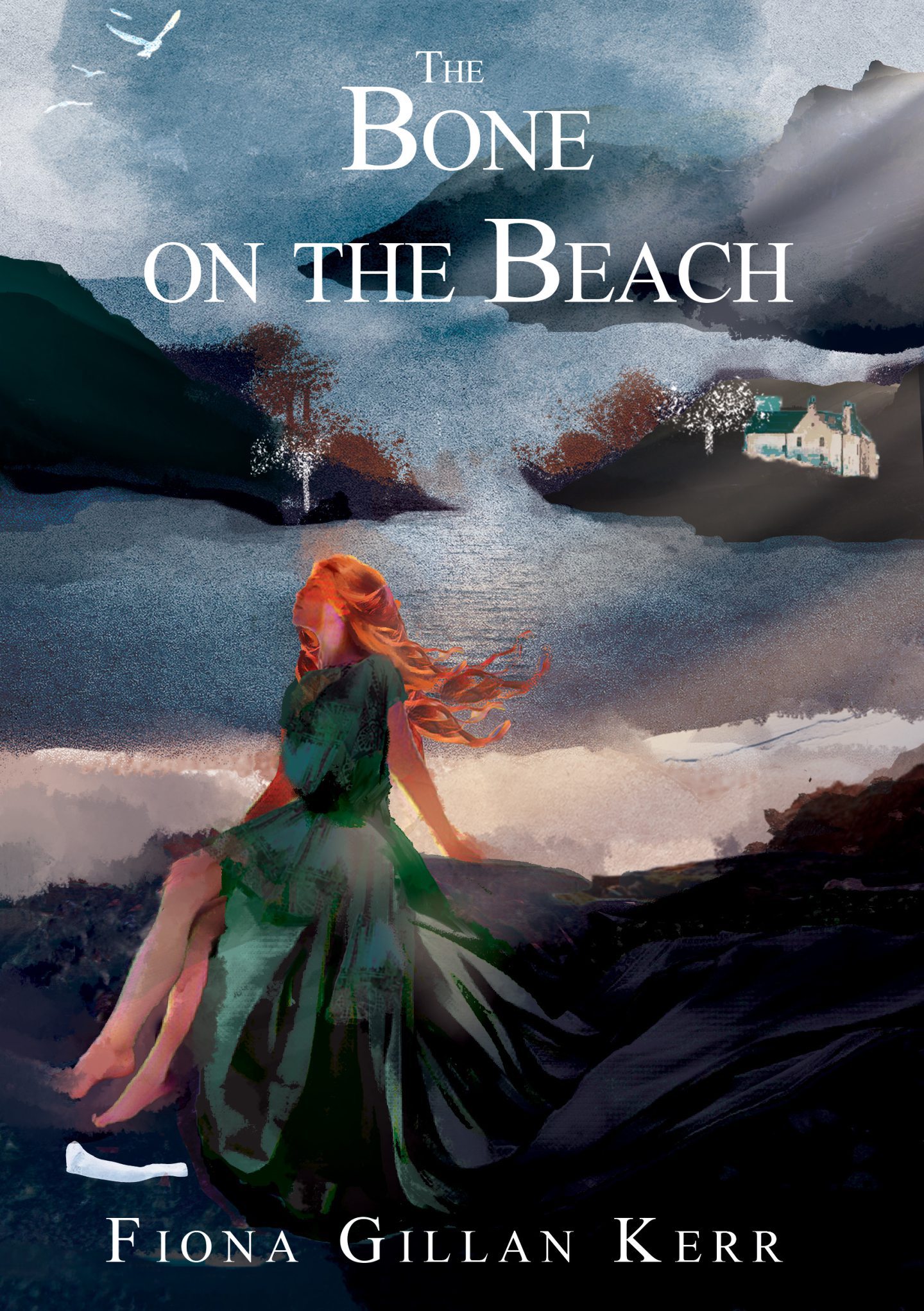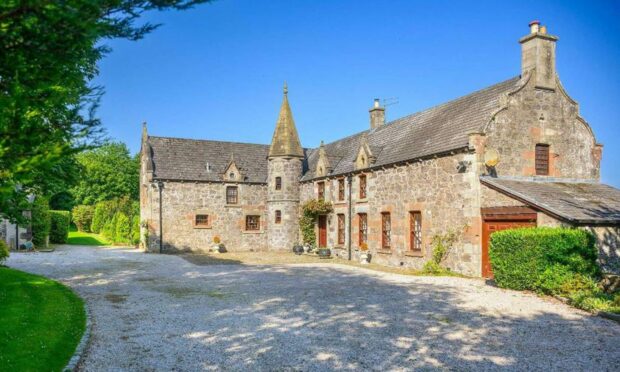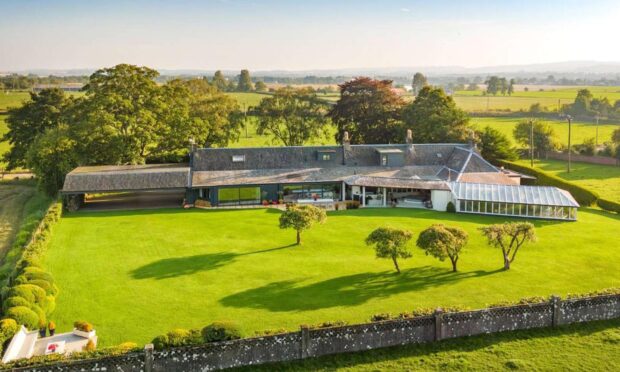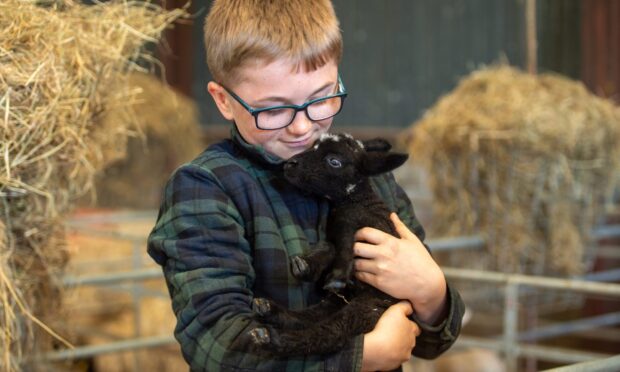The discovery of a bone on a windswept Scottish beach inspired Fiona Gillan Kerr’s retelling of the legend of Deirdre of the Sorrows. We catch up with her to find out about the resulting novel, The Bone on the Beach.
Set in two recent timeframes – 2002 and 2017, Fiona’s story – part mystery, part ghost story – weaves the experiences of her two female protagonists together from the onset.
Fiona explains: “I decided on the title The Bone on the Beach because I actually did find a bone on a wild and windswept beach about three hours from where I currently live in the Highlands.
“Its incongruity in that place immediately struck me as a natural subject for a mystery.
“And what better story than to find a legend, a Celtic legend – in this case, Deirdre of the Sorrows – as a vehicle to reimagine this in the place I loved?” she adds, pointing out that Deirdre’s story is a love story and a tragedy.
“It was foretold that Deirdre would be so beautiful that men would go to war, clans would fight to claim her as one of their own,” explains the author.
“She was closely attuned to the natural world. She had an dà-sheallach [the second sight], insofar as she foresaw her future lover when a raven landed in the snow with its prey.”
What really happened to Deirdre…
Setting Deirdre’s story in 2002, Fiona told this part of the tale in the third person, “to give it that feeling of distance.
“I introduced Meghan 15 years later, in 2017. I hoped that this second protagonist, written in the first person, would allow readers to be more involved with the discovery process.
“Only Meghan and the reader are, in the end, privy to the whole story, the whole truth about what really happened to Deirdre.”
The two women’s stories unfold and secrets revealed. “Secrets are often buried, in families and communities,” says Fiona.
“People die suddenly and their restless ghosts haunt the living. Both Deirdre and Meghan are about the same age.
“The difference between them is that Deirdre always knew who she was and wasn’t afraid to show it. Even at 18, she did not bend to others’ opinions.
“Meghan, on the other hand, who is now twice her age, has not found the same confidence. But, as she finds out more about Deirdre, she too gets the courage to take control of her own life.”
Fiona Gillan Kerr’s love for the Highlands
Her own experience of life in a restored stone croft in a Highland village helped her to construct the perfect location for her tale. “A lot of the novel is directly related to where I live. Of course, I’ve also used other locations in the area but they are all nearby.”
“We’ve made some wonderful friends here,” enthuses Fiona, “and they’ve told us so much about their traditions, their way of life, the sad history of the Highland Clearances.
“For many, the bitterness has never disappeared.
“And it’s still visible today wherever you look – in the collapsed and neglected buildings in the fields and along the roadsides, in the abandoned villages where people once tried to eke out a living, in the croft system itself.”
The Bone on the Beach inspired by the landscape
That Highland location is an integral part of the story of The Bone on the Beach, as Fiona explains; “The landscape has created the kind of people who lived here and continue to do so. And vice versa.
“Each is totally a result of the other. It is harsh and yet beautiful. And the people are so wonderfully friendly, always ready to step up and help a neighbour in trouble.
“For me, it is a totally magical place, never the quite the same each time the sun rises or the tides turn.”
Mythology in a modern world
Fiona is a huge fan of the ancient stories that she has come across: “They convey a feeling of continuity, don’t they?” she points out.
“Humans, since the beginning of recorded time (and probably before) have faced the same challenges and dilemmas, the same conflicts and the same devotion to each other. It’s good to remind ourselves that we’re not the first to feel sad or happy, hopeful or worried.
“And those myths and legends are great stories, aren’t they?” continues the author, “Beautiful flights of imagination, passed down from storyteller to storyteller.
“All the ancient civilisations had theirs too. We continue to tell our children fairy stories today, about the ogres and witches and those who are brave enough to challenge their tyranny.
Those myths and legends are great stories. Beautiful flights of imagination, passed down from storyteller to storyteller.”
“I believe that many psychologists tell us that they’re a good way for children to begin to come to terms with the real world in a less frightening way.”
Transposing Deirdre’s legend into a contemporary setting required a few changes but nothing that Fiona feels was too challenging.
“I looked around and translated a lot of the story into a modern setting,” she says.
“The king – in the original story – became a laird. Deirdre’s lover and his brothers, became trawlermen instead of clan warriors.
Fiona Gillan Kerr on possible pitfalls
“But sometimes I had to be careful,” she admits, “including with the internet which was very different in 2017 from what it had been in 2002. Facebook did not even come into existence until 2004!”
Positive reviews from the press and readers have given Fiona the confidence to get more work out there and she certainly isn’t short of material: “I have four more novels in the pipeline,” she says, “one ready to go, a couple need some editing, and one needs a complete rewrite.
“I’ve also written about 10,000 words of a completely new novel, also set in the Highlands.”
- The Bone on the Beach by Fiona Gillan Kerr is available now, £9.99, Ringwood Publishing.
